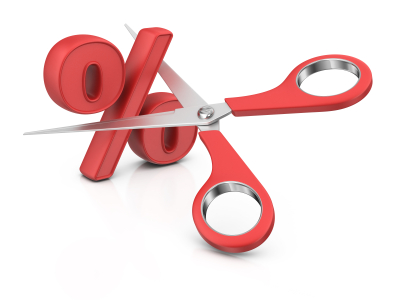China Lowers Interest Rates While The Economy Struggles And The Number of Covid Cases Increases
In a bid to support development as the second-largest economy in the world is battered by periodic lockdowns and a deepening real estate crisis – China has cut a crucial lending rate
The People’s Bank of China dropped its medium-term lending rate for the first time since January on Monday, August 15th, by 10 basis points to 2.75%. This rate is used to give one-year loans to the banking sector. Bloomberg analysts predicted the central bank would not change the current interest rate.
The move highlighted Beijing’s growing uneasiness as it battles a month-long slump in consumer demand brought on by its protracted zero-Covid policy, as well as the consequences of cash-strapped real estate developers and sluggish global development.
China’s economy barely avoided a recession in the second quarter despite Beijing’s intentions to inject hundreds of billions of dollars in stimulus to promote growth.
The rate of the country’s economic recovery from widespread lockdowns is stalling, as seen by the worse-than-anticipated consumer and manufacturing activity in official numbers issued on Monday 15th August, 2022.
Many experts are pessimistic about the scope and pace of Beijing’s reaction, but they anticipate that the country’s economic slump will lead to looser monetary policy and fiscal stimulus.
Too Little – Too Late
“China’s growth in the second half of 2022 will be significantly hindered by its zero-Covid strategy, the downward spiral of the property markets and a likely slowdown of export growth,” said Ting Lu, Nomura’s Chief China Economist.
“Beijing’s policy support could be too little, too late and too inefficient,” wrote Ting Lu, Nomura’s chief China economist in a note. “We think markets are too optimistic about growth in the second half, and we expect a new round of cuts of growth forecasts in coming weeks.”
With the emergence of a fresh wave of Covid-19 cases and the ensuing weeks-long lockdowns, China’s downhill trend started in March. The second-largest economy in the world reported its worst quarterly growth in two years in June. In comparison to the second quarter of 2021, the GDP only expanded by 0.4%.
Even while it was not officially stated, there were already hints that China did not anticipate attaining the established objective of 5.5% economic growth for this year at the Politburo meeting in July, the Communist Party’s highest decision-making body.
Although the economy has suffered, there are few signs that Beijing would change its “zero-Covid” strategy. Health officials recently imposed more lockdowns around the country, including on the well-known tourist island of Hainan, in an effort to stop recurrent outbreaks of the highly infectious Omicron variant.
The Asian Equity Team of Nikko Asset Management says, “Observers of the Chinese market suggest an easing of the zero-Covid policy following the party congress in autumn, but that remains a matter of conjecture.” What is obvious are the areas the government is concentrating on in the long run: greater self-reliance, particularly in technology supply chains; a transition to cleaner energy through greater energy security; and “common prosperity” through improved healthcare and more equitable wealth distribution.
After the (PBoC) People’s Bank of China highlighted the risk of growing inflationary pressure in its quarterly report last week, analysts said the rate cut was an important signal that Beijing would maintain efforts to stimulate the economy through monetary policy rather than shifting focus on rising prices.
“I would say the MLF (Medium-term Lending Facility) cut is a way to pledge Beijing’s continued support,” said Jing Liu, chief economist for greater China at HSBC, adding that some had thought last week’s report was “the beginning of monetary tightening” in the world’s second largest economy.
The multi-national investment bank Société Générale characterised the July data as “simply bad,” noting that production, investment, and consumption all experienced slowdowns “under the crushing weight of the zero-Covid policy” and that the “housing sector is in free fall.”
“Policymakers have started to communicate their concerns about overstimulating the economy with too much liquidity, while the real risk is exactly the opposite in our view – too little easing and too weak a recovery,” the banks analysts said.
The zero-Covid policy of President Xi, which imposes rigorous lockdowns wherever the virus outbreaks are found, is putting further pressure on China’s immediate future.
To guarantee that citizens scan their health codes when they enter buildings in Shanghai, officials are exploring the use of drones. Depending on an individual’s exposure to Covid-19, the health code is recorded on a required smartphone app that decides if they are allowed to travel.
“China is definitely in a very desperate situation,” said Xingdong Chen, chief China economist at BNP Paribas. “The problem now is no effective demand. If you don’t allow people to come out and consume… THERE IS NO DEMAND!”
Online sources: ft.com, asianfundmanagers.com All opinions and views expressed or suggested by the Digital Zeitgeist are not necessarily the same opinions and views held by or suggested by GPM-Invest plus any and all partners, affiliates, parties, or third parties of GPM-Invest. Any type of media distributed by GPM-Invest IS NOT financial advice. Please seek advice from a professional financial advisor

